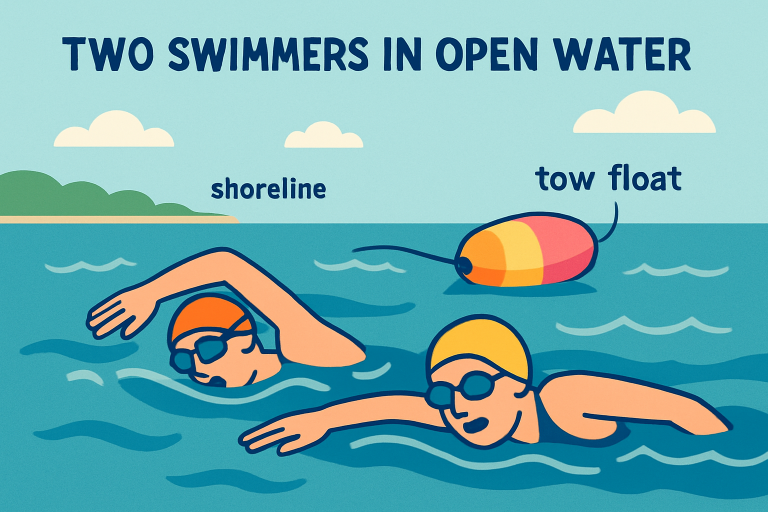Smart Safety Practices for Open Water Swimming Adventures
Know the Environment
Exploring open water can be exhilarating, offering a connection to nature that no swimming pool can rival. Still, each open water site—whether a lake, river, or ocean—presents unique challenges and potential hazards. Before venturing in, research your swim location’s layout, noting entry and exit points, water depth, and any possible obstacles like rocks, submerged logs, or plant growth. Local signage or advisories may highlight current hazards and updates you shouldn’t miss. Staying informed about your swim site is a key step for preventing mishaps and ensuring a safe outing for all participants.
Understanding the critical importance of open water swimming safety allows swimmers to adopt effective strategies from the start. Many accidents are preventable by following location-specific warnings and adjusting techniques according to the environment. Swimmers who make a habit of evaluating each swim site before entering the water are better equipped to spot risks early and adapt accordingly.
Essential Gear for Open Water Swimmers
Equipping yourself properly is fundamental, both for comfort and well-being. Start with a high-visibility swim cap and well-fitting goggles to cope with sun glare, changing light, and debris. A brightly colored tow float not only enhances your visibility but can act as a flotation aid in emergencies. Wetsuits are advisable in colder water, not only for warmth but also for extra buoyancy. When planning to swim alone or in unfamiliar spots, bring along a whistle and carry identification, such as a waterproof ID bracelet. Additionally, setting up a small first aid kit onshore is wise for treating minor injuries quickly.
Checking Weather and Water Conditions
Open water environments are susceptible to weather changes. Reviewing weather forecasts and water reports prior to every swim is non-negotiable. Wind direction and speed, upcoming storms, aggressive currents, water clarity, and temperature shifts can turn a safe swim into a hazardous event in minutes. Reliable sources like NOAA’s rip current safety guidelines help swimmers gauge whether conditions are suitable for safe entry. Even in warm air temperatures, the water can be brisk enough to cause cold shock, so checking both is essential.
Benefits of Swimming with Others
While swimming solo may appeal to those seeking solitude, it’s safer to swim with a buddy or a group—especially in unfamiliar settings. Companions can provide immediate help in case of fatigue, cramps, or other difficulties and share local knowledge about the best spots and hidden dangers. Group swimming is not only safer but also more enjoyable and motivating, with local swim clubs often organizing beginner-friendly open water swims that foster camaraderie and accountability.

Staying Visible and Safe
- Wear a neon or brightly colored swim cap to stand out in the water.
- Use a buoyant tow float to increase visibility for boats and lifeguards, and provide a rest stop if needed.
- Stick to designated swimming areas whenever possible and keep out of boat traffic zones.
- Always notify someone reliable about your planned swim route and expected return time.
These visibility essentials drastically reduce the risk of accidental collisions and ensure that people on shore or nearby are aware of your presence. In open water, being seen is as important as being safe.
Tips for Different Types of Open Water
Lakes
Lakes often seem tranquil, but appearances can be deceiving. Murky water and sudden drop-offs make navigation tricky, especially for children or beginners. Stick close to the shore, and watch for tangled vegetation and slippery rocks.
Rivers
Rivers are dynamic, with constantly shifting currents, whirlpools, and underwater debris. Always enter feet first and be vigilant for changing current speeds or floating obstacles. Beginners should avoid rivers after heavy rainfall, as current strength can increase rapidly.
Oceans
The ocean presents rip currents, crashing waves, and marine life you won’t find elsewhere. Only swim in lifeguard-patrolled areas, and familiarize yourself with tide schedules and local marine wildlife advisories. Remember, rip currents can appear suddenly—swim parallel to shore if caught to escape the current’s grip.
Emergency Preparedness
Preparation saves lives in emergency scenarios. Master the universal distress signal by waving one arm overhead if you need help. Practice self-rescue skills, such as floating on your back and treading water, and review expert guidelines from the CDC on drowning prevention. Carry emergency identification and ensure someone on shore is aware of your activity. For added confidence, consider taking a certified lifesaving or CPR course. Skills like these empower swimmers to act decisively if trouble arises.
Staying Healthy in Natural Water
Natural bodies of water can harbor bacteria, parasites, or pollutants that can cause illness. Avoid swimming with open wounds and pay close attention to local advisories about blue-green algae or high bacteria counts, which are common after heavy rain. Rinse thoroughly with clean water after your swim and remain alert to symptoms like itchiness or ear pain, which may indicate minor infections. Staying hydrated and mindful of sun exposure is important for full-body wellness during longer or sun-intense swims.
Conclusion
Open water swimming is a rewarding pursuit, combining fitness with adventure and a sense of freedom. The keys to a safe experience are thoughtful preparation, awareness of environmental cues, and use of proper safety gear. Swimming with friends or fellow enthusiasts, prioritizing visibility, and staying up-to-date on weather and health advisories are all essential habits. By putting open water swimming safety first, swimmers can savor every stroke with confidence and peace of mind.
Visit the rest of the site for more interesting and useful articles.

